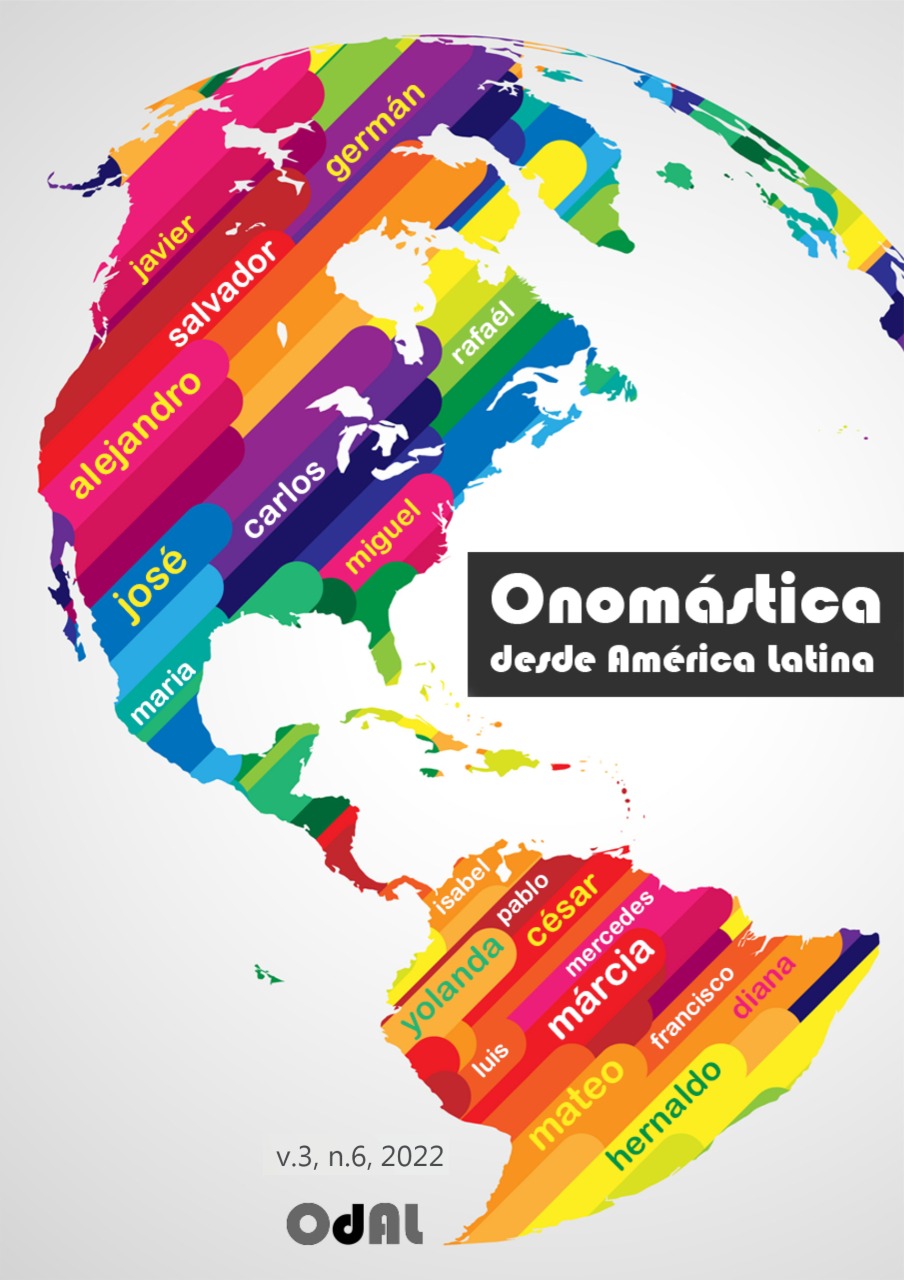An approach to the study anthroponomy in Upper Peru during the colonial period from the 16th to the 18th century
DOI:
https://doi.org/10.48075/odal.v3i6.29183Keywords:
History of Spanish in America, Upper Peru, colonial period, anthroponymy, notarised documentsAbstract
The history of forenames has notably been studied in Spain (Simón Parra, 2008; García-Gallarín, 1998) and in some areas of the American continent such as in Mexico (Boyd-Bowman, 1970; San Martín Gómez y Zabalza Seguín, 2021), El Salvador, and Honduras (San Martín Gómez, 2021a, 2021b). However, the study of forenames is fairly new in other areas such as in South America except for the study done on Humahuaca (Díaz Martínez, 2003), where the study of this topic has been given limited attention by other researchers in the language. For this very reason, the following paper pretends to give information about the history of anthroponymy in Upper Peru from notarial documentation of the 16h to the 18h century edited by Mendoza (2000).
In this way, the fundamental objectives of this study will be the following: a) to understand the trends that the anthroponymy of Upper Peru between the 16th and 18th centuries; b) to analyse whether there are trends in the use of the name according to social class; c) to compare any trends in the use of Upper Peruvian forenames with other Hispanic areas during these centuries to establish their similarities and differences; and d) to identify possible lines of future research that would contribute to a deeper study and enrich the knowledge of the history of the forenames in this area.
KEY WORDS: History of Spanish in America, Upper Peru, colonial period, anthroponymy, notarised documents.
References
BOYD-BOWMAN, P.(1970). “Los nombres de pila en México desde 1540 hasta 1950”. Nueva Revista de Filología Hispánica, 19 (1), pp. 12-48.
DÍAZ MARTÍNEZ, L. (2003). “Onomástica mariana en las actas de bautismo de Humahuaca (Jujuy-Argentina) del siglo XVIII”. Lexicografía y lexicología en Europa y América: Homenaje a Günter Haensch, pp. 239-248. Madrid: Gredos.
GARCÍA GALLARÍN, C. (1998). Los nombres de pila españoles. Madrid: Ediciones del Prado.
MENDOZA, J. G. (2000).Cien documentos para la historia lingüística de Bolivia: siglos XVI-XVII (Alto Perú). La Paz: Universidad Nacional de San Andrés.
SAN MARTÍN GÓMEZ, J. A. (2021a.): “Estudio de la antroponimia de El Salvador tardocolonial (1650-1803): tendencias de uso y evolución”, en José Luis Ramírez Luengo (coord.). Estudios sobre la historia léxica del español de América. Jaén: UJA Editorial, pp. 185-193.
SAN MARTÍN GÓMEZ, J. A. (2021b): “Una aproximación al estudio de la antroponimia en Honduras durante el periodo colonial (siglos XVII-XVIII)”. Revista de Lingüística y Filología de la Universidad de Costa Rica, 47 (1).
SAN MARTÍN GÓMEZ, J. A. y ZABALZA SEGUÍN, A. (2021). “Una aproximación a la antroponimia queretana del siglo XIX (1800-1850)”, Onomástica Desde América Latina, ahead of print.
SIMÓN PARRA, M. (2008). El nombre de persona en la documentación castellana medieval (Tesis doctoral inédita). Alcalá de Henares: Universidad de Alcalá.
Downloads
Published
How to Cite
Issue
Section
License
Copyright (c) 2022 José Armando San Martín Gómez

This work is licensed under a Creative Commons Attribution-NonCommercial-ShareAlike 4.0 International License.
Creative Commons Copyright Notice
Open Access Journals Policy
Authors who publish in this journal agree to the following terms:
1. Authors retain the copyright and grant the journal the right of first publication, with the work simultaneously licensed under the Creative Commons Attribution License that allows the sharing of the work with recognition of authorship and initial publication in this journal.
2. Mandatory authorities to assume commitments, for non-exclusive distribution of the version of the work published in this journal (eg, publish in an institutional repository or as a book chapter), with recognition of authorship and initial publication in this journal.
3. Authors are allowed and encouraged to publish and distribute their work online (eg in institutional repositories or on the personal page) at any point before or during the editorial process, as this can generate productive changes as well as increase impact and citation of the published work (See The Effect of Open Access).
Creative Commons License
This work is licensed under a Creative Commons Attribution-NonCommercial-ShareAlike 4.0 International License, which allows sharing, copying, distributing, displaying, reproducing, a whole or parts as long as it has no commercial purpose and is cited by authors and a source.

